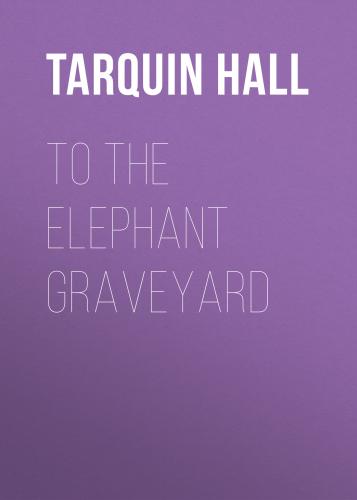To the Elephant Graveyard
By the same author
Mercenaries, Missionaries and Misfits: Adventures of an Under-Age Journalist
To the Elephant Graveyard
A True Story of the Hunt for a Man-killing Indian Elephant
TARQUIN HALL
Grove Press
New York
Copyright © 2000 by Tarquin Hall
‘Shooting an Elephant’ by George Orwell (© George Orwell 1936) is reproduced from The Complete Orwell (Secker & Warburg, 1998) by permission of A.M. Heath & Co. Ltd on behalf of Bill Hamilton as the Literary Executor of the late Sonia Bronwell Orwell and Secker & Warburg Ltd
All rights reserved. No part of this book may be reproduced in any form or by any electronic or mechanical means, including information storage and retrieval systems, without permission in writing from the publisher, except by a reviewer, who may quote brief passages in a review. Scanning, uploading, and electronic distribution of this book or the facilitation of such without the permission of the publisher is prohibited. Please purchase only authorized electronic editions, and do not participate in or encourage electronic piracy of copyrighted materials. Your support of the author’s rights is appreciated. Any member of educational institutions wishing to photocopy part or all of the work for classroom use, or anthology, should send inquiries to Grove Atlantic, 154 West 14th Street, New York, NY 10011 or [email protected].
First published in 2000 by John Murray (Publishers) A division of Hodder Headline
Published simultaneously in Canada
Printed in the United States of America
eISBN 978-0-8021-5838-3
Library of Congress Cataloging-in-Publication data is available for this title.
Grove Press
an imprint of Grove Atlantic
154 West 14th Street
New York, NY 10011
Distributed by Publishers Group West
For Dinesh Choudhury
in gratitude for his kindness and unfailing hospitality
Contents
3. The Elephant Wars
5. The Horse Might Talk
6. Shoot to Kill
7. The Plot Thickens
8. The Pool of Ganesha
9. Death of a Mahout
10. A Rendezvous with Terrorists
11. The Rogue’s Last Stand
12. To the Elephant Graveyard
Bibliography
Illustrations
2. Sunset over the Karbi Anglong Hills
3. On the trail of the rogue elephant
4. Churchill, mahout and head of the elephant squad
5. Collecting fodder in Kaziranga National Park
6. Chander, assistant mahout
7. An elephant’s bath
8. Elephant theft
9. Measuring the rogue’s footprints
10. A forest guard
11. The elephant’s grave
All the photographs were taken by the author.
The Place where Elephants Die
Hidden away from the haunts of men, west of a widespread lake,
Out of the scope of human ken, in tangled thicket and brake,
’Mid arching trees where a foetid breeze ruffles the ragged sky,
Is the sombre place where the vanishing race of the elephants come to die.
Cullen Gouldsbury, Songs out of Exile
The Hit
‘Man and the higher animals, especially the primates, have some few instincts in common. All have the same senses, intuitions, and sensations, similar passions, affections, and emotions, even the complex ones such as jealousy, suspicion, emulation, gratitude and magnanimity; they practise deceit and are revengeful . . .’
Charles Darwin, The Descent of Man
The elephant came in the dead of night. At first, he moved silently through the isolated hamlet, past the cottages, bungalows and huts where the inhabitants had long been fast asleep. Past the meeting-house, the fish-pond and the village shop. Past the cigarette stall, the water pump and the temple, dedicated to Hanuman, the monkey god.
The tusker crossed the rickety wooden bridge that spanned the village stream and turned east, following the sandy lane for several hundred yards. Here, he took a short cut over a field, breaking down one or two fences and trampling rows of cabbages underfoot. Soon, he passed another clutch of homes and a primary school.
For some unexplained reason, none of these buildings attracted his attention. Indeed his tracks, when examined the next morning, showed that he failed to stop even once along his chosen path. Instead, he continued to the edge of the settlement, strode straight up to a bamboo hut belonging to a local farmer called Shom, uttered a shrill trumpet and then launched his devastating attack.
Monimoy, a farmer from the same village, was a witness to what happened next. Now, two days later, he sat in the Assam Forest Department’s public affairs office, telling his story to P. S. Das, the information officer whom I had come to meet soon after my arrival in Guwahati.
‘I was making my way home after some drinking,’ said Monimoy. ‘I was walking in the lane when the elephant came. I watched what happened next with my own eyes!’
The
